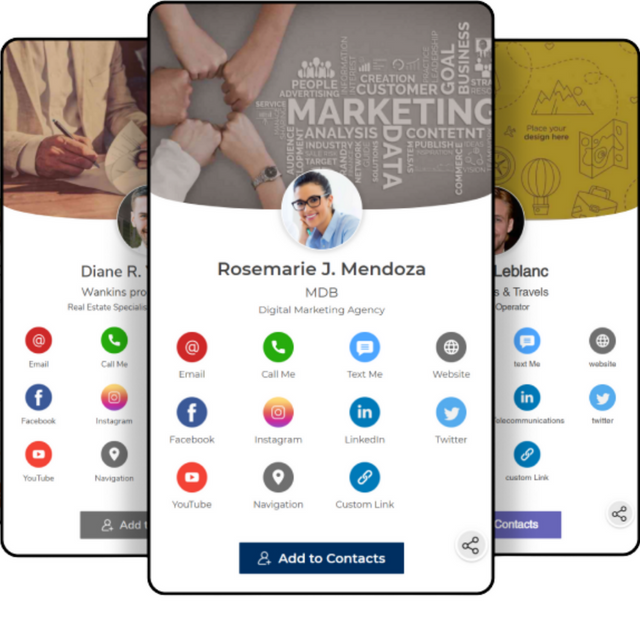3 Important Things You Should Know About Digital Business Cards
A growing number of businesses are using digital business cards. Nowadays, social media has made it more common than ever. There is no denying that everyone has an account on LinkedIn, Twitter, Instagram, or Facebook these days. Due to this, businesses need to stand out in a crowded market. And one way to do that is with digital business cards. However, with so many options available, it can be difficult to choose the right digital business card. It's helpful to understand your needs before choosing a card, because different types of cards offer different features and functions. Check out these tips if you're considering or already own a digital business card but aren't using it to its full potential!
Digital business cards: what are they?
As the name implies, a digital business card exists solely in electronic format. Physical cards are printed and distributed in person, whereas digital cards are delivered electronically. They can be used to promote yourself and your business online. A digital business card is a smart way to introduce yourself and your services, even if you don't have physical cards. It's a convenient, cost-effective way to connect with prospective clients. Business cards that live inside your internet browser, email signatures, and social media profiles are all examples of digital cards. There are also apps that allow you to create and send digital business cards to anyone you're connected to online quickly and easily.
Digital business cards: why use them?
It is more convenient to create a virtual business card than to design and distribute physical cards. A digital card is easy to create and costs almost nothing. Plus, you can include more information on digital cards compared to printed ones: instead of putting your address, phone number, and email on a physical card, you can include them all on one. Virtual businesses, such as those operating mostly online, can also benefit from digital cards. Virtual businesses may not even have an address to place on a card, and printed cards might not be practical (if you work from home at all, for example).
Digital business cards: 3 things to look for
Ease of use: The most effective digital business card is the one you actually use. Creating and sending a card requires a lot of effort, so you'll probably avoid it. You should be able to create and send your cards easily so that it becomes part of your everyday life. A copy and paste function will make it easier to maintain consistency in your communications. The information can be updated once and shared across all of your online interactions. It's imperative that your digital business card conveys the right message about you and your company. Make sure it fits your branding and is customizable. Several different designs and colors are available for digital cards.
Digital Business Cards: 3 Features You Should Include
A URL must be associated with your card by default. Your website or social media accounts can be used for this purpose. It should be easy to find and contain your name, so you know it belongs to you. Videos are becoming more and more popular for business cards because they are incredibly powerful tools. Not only does it allow for better content, but it also gives you a chance to introduce yourself and your brand more personally. Make sure your card includes your name, email address, and phone number. All the information should be accurate; you don't want people to be misled.
Summary
The advantages of a digital business card include the ability to include more information, such as URLs and social media links. It is convenient for individuals without addresses or who work mostly online to have a virtual card. You can use these cards in social media profiles, emails, and web extensions to interact with people without leaving the page you're on. It's wise to choose a digital business card that's easy to use and allows you to customize and share your information. Ensure that it includes your contact information and your website or social media URL, if possible.
